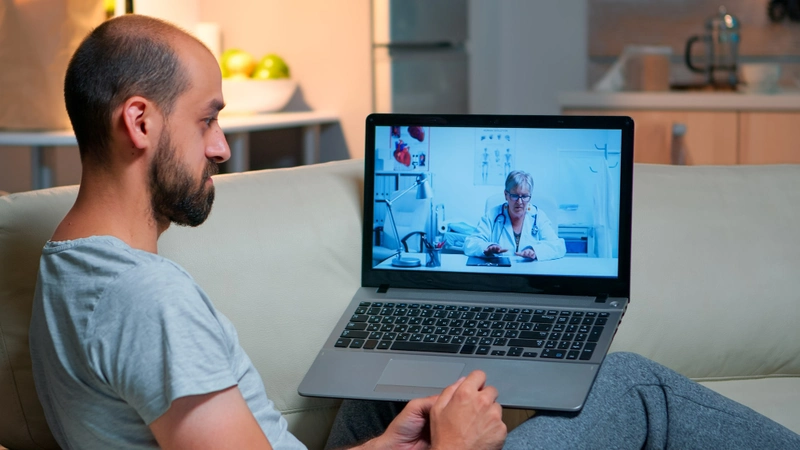- Published on: Aug 28, 2023
- 2 minute read
- By: Secondmedic Expert
Sedentary Lifestyle Sufferers Rejoice: Your 7-Day Escape Plan!
We've all been there – days when it feels like you're glued to your chair, whether at work, during a Netflix binge, or while scrolling through social media. But did you know that a sedentary lifestyle could take a toll on your overall health? The good news is that you have the power to break free from these habits and embark on a journey towards a more active and vibrant life.
Understanding Sedentary Habits
The Sedentary Trap
Picture this: you're engrossed in a project, hours pass, and you realize you haven't moved from your seat. This is the sedentary trap. When we spend prolonged periods sitting, it affects our metabolism, circulation, and even mood. But fear not, for there are ways to escape this trap.
My Sedentary Wake-Up Call
I'll never forget the time I spent an entire day binge-watching my favorite TV show. When I finally stood up, my legs felt like jelly! That's when I realized the impact of my sedentary lifestyle. Personal anecdotes like these remind us that we're not alone in this struggle.
Taking Action: Your 7-Day Plan
Day 1-2: Small Steps, Big Changes
Start by setting small goals. Take short breaks to stretch or walk around every 30 minutes. This not only boosts your energy but also improves circulation. You'll be surprised how these tiny breaks add up!
A Desk Warrior's Arsenal
As someone who spends hours at a desk, I discovered the magic of desk exercises. Simple moves like seated leg lifts or desk push-ups can be done discreetly and make a significant difference.
Day 3-4: Embrace Movement
It's time to step up your game. Try parking farther from your destination or taking the stairs instead of the elevator. These choices might seem minor, but they're stepping stones towards a more active lifestyle.
Dance It Out
One of the most enjoyable ways I found to infuse movement into my day is dancing. Crank up your favorite song and dance like no one's watching. It's an instant mood lifter!
Day 5-6: Exploring Activities
Engaging in activities you love makes breaking away from a sedentary routine easier. Whether it's cycling, gardening, or playing with your dog, find what brings you joy and keeps you moving.
Rediscovering Nature
A turning point for me was rekindling my love for nature walks. Being surrounded by greenery not only refreshed my mind but also got me moving consistently.
Day 7: Celebrate Progress
You've made it through a week of positive changes! Take a moment to appreciate your progress. Reward yourself with something enjoyable—a movie night out, a spa day, or a delicious treat.
Moving Forward with Confidence
Remember, this 7-day plan is just the beginning. Building an active lifestyle takes time, so be patient with yourself. Celebrate both small and big wins along the way.
Conclusion
Breaking free from a sedentary lifestyle requires commitment, but the benefits are worth it. By incorporating movement into your daily routine, you're boosting your physical and mental well-being. I've experienced the transformative power of these changes firsthand, and I can confidently say that you're on the right path to unlocking a healthier, more vibrant you. So, stand up, stretch, and take that first step toward an active life.
Read FAQs
A. A sedentary lifestyle involves prolonged periods of sitting or inactivity. This can occur due to desk jobs, binge-watching TV, or using electronic devices extensively. Unfortunately, it can negatively impact our health, leading to issues like weight gain, poor circulation, and even increased risk of chronic diseases like heart disease and diabetes.
A. Our 7-day escape plan is designed to gradually introduce movement into your daily routine. It includes small, manageable steps such as taking short breaks to stretch, incorporating desk exercises, and gradually increasing physical activity. By following this plan, you'll boost your metabolism, improve blood circulation, and kickstart your journey toward a more active lifestyle.
A. Absolutely! In fact, our plan is tailored to accommodate those with desk jobs. We understand the challenges of staying active while working at a desk. The plan includes desk exercises that you can do discreetly, as well as tips on taking short breaks to move around. It's all about making the most of the opportunities you have throughout your day.
A. Not to worry – our 7-day escape plan is designed for all fitness levels, including beginners. The goal is to gradually increase your activity level without overwhelming you. The plan starts with small, achievable steps and progresses at a pace that suits you. Remember, the journey to a more active lifestyle is about consistency and progress, no matter where you're starting from.










